Little Havana is where Cuban culture truly comes alive in the heart of Miami. The neighborhood bursts with food, music, and a local history that just grabs you. When I spent 48 hours here, I found myself surrounded by colorful murals, the smell of fresh Cuban coffee, and salsa tunes drifting from every direction.
Everywhere I looked, something new caught my eye or tempted my taste buds. From traditional cafes serving pastelitos to lively parks where locals gathered for dominoes, every street just felt alive and full of character.
My time in Little Havana wasn’t just about ticking off sights—it was about soaking in the soul of Cuban Miami.
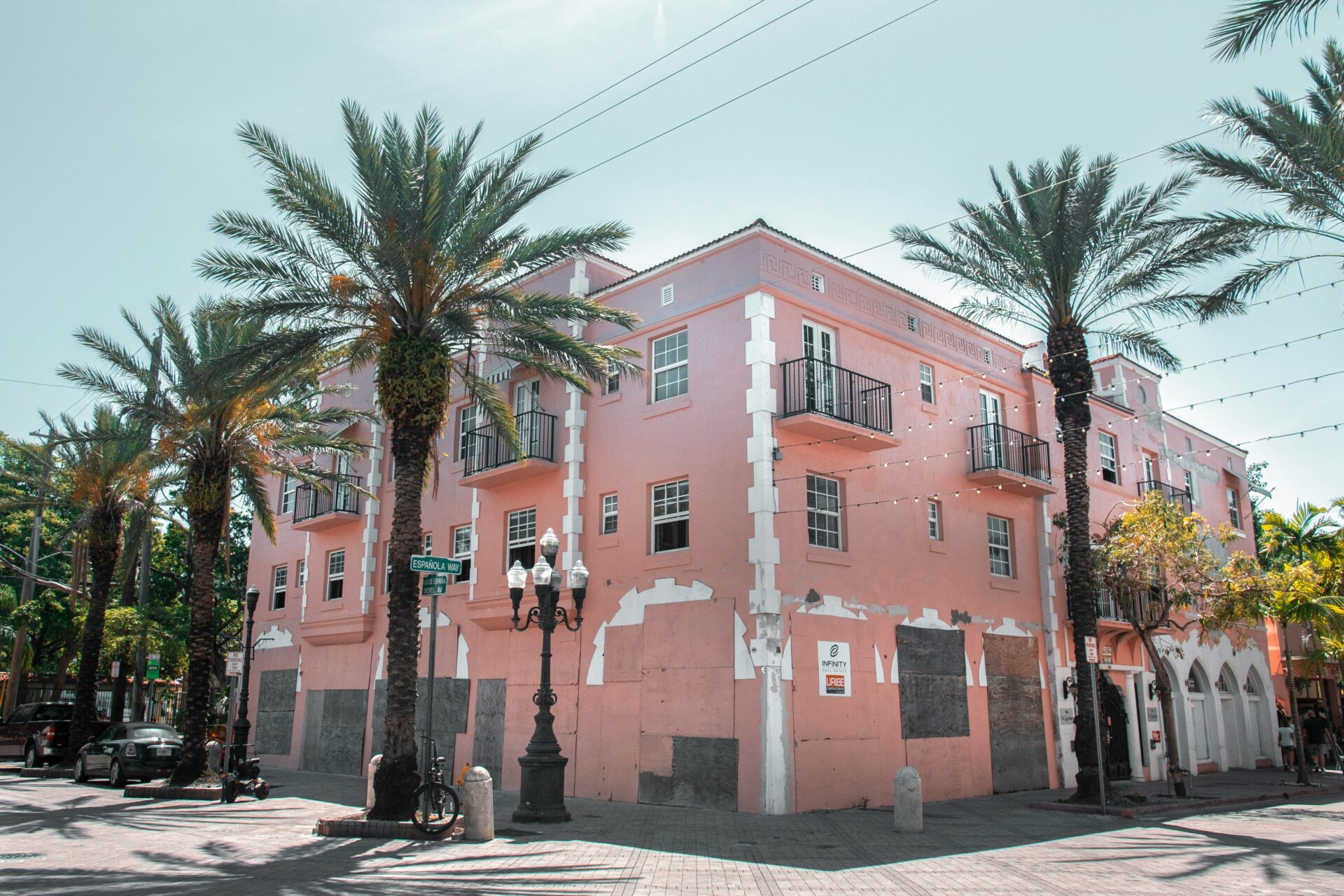
First Impressions: Arriving in Little Havana
Stepping into Little Havana, I immediately sensed a neighborhood pulsing with music, color, and Cuban spirit. The blend of sights, sounds, and people made this corner of Miami stand out.
Sights and Sounds on Arrival
The first thing that hit me: how busy and lively everything felt. Spanish music spilled from storefronts, mixing with the chatter and laughter of people on the street.
Bright murals and bold shop signs covered nearly every building. Calle Ocho—Southwest 8th Street—jumped out right away.
The street’s lined with small, family-run businesses: restaurants, bakeries, cigar shops. Painted rooster statues stood guard on the sidewalks, adding even more color.
Classic cars in wild shades—pink, blue, you name it—rolled by, giving a nod to Cuba’s famous streets. The sweet scent of Cuban coffee wafted from a ventanita window, where locals waited for their morning espresso.
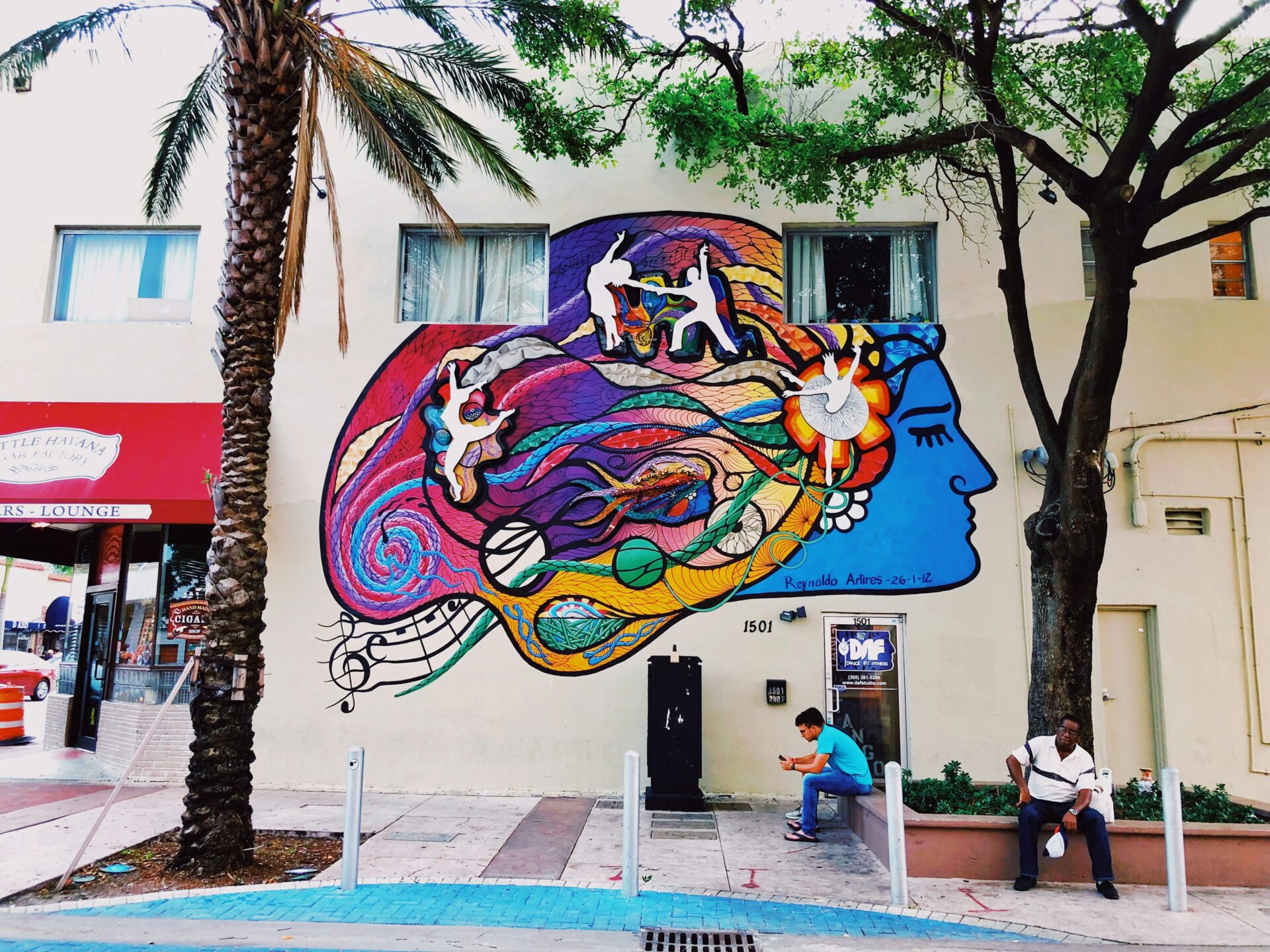
Atmosphere of Calle Ocho
Calle Ocho really felt like the heart of Little Havana. The street buzzed with energy, packed with both residents and visitors.
Live salsa music echoed from somewhere up ahead, pulling me closer. Street art covered the walls, with murals of Cuban icons, bright flowers, and daily life scenes.
Cafes and restaurants kept their windows open, letting the smells of roast pork, pressed Cuban sandwiches, and warm empanadas drift out. Domino Park stood out—groups of older men played dominoes, their voices lively as they greeted friends and newcomers.
The mix of food, art, and music gave Calle Ocho a vibe that was both inviting and deeply rooted.

Meeting the Community
Right away, I felt how strong the community ties are in Little Havana. Shop owners greeted me with warm smiles and a friendly “Buenos días.”
Many seemed to know each other by name, always looking out for their neighbors. I chatted with a young woman selling pastelitos, who told me about growing up in the neighborhood.
Older men in front of cigar shops waved and invited me to watch as they rolled fresh cigars. At a ventanita café, I sipped cafecito and swapped stories with locals—everyone eager to share their favorite spots.
Teenagers, grandparents—everyone had a story about their family’s journey from Cuba to Miami. That openness and pride in their heritage made me feel right at home, even as a visitor.
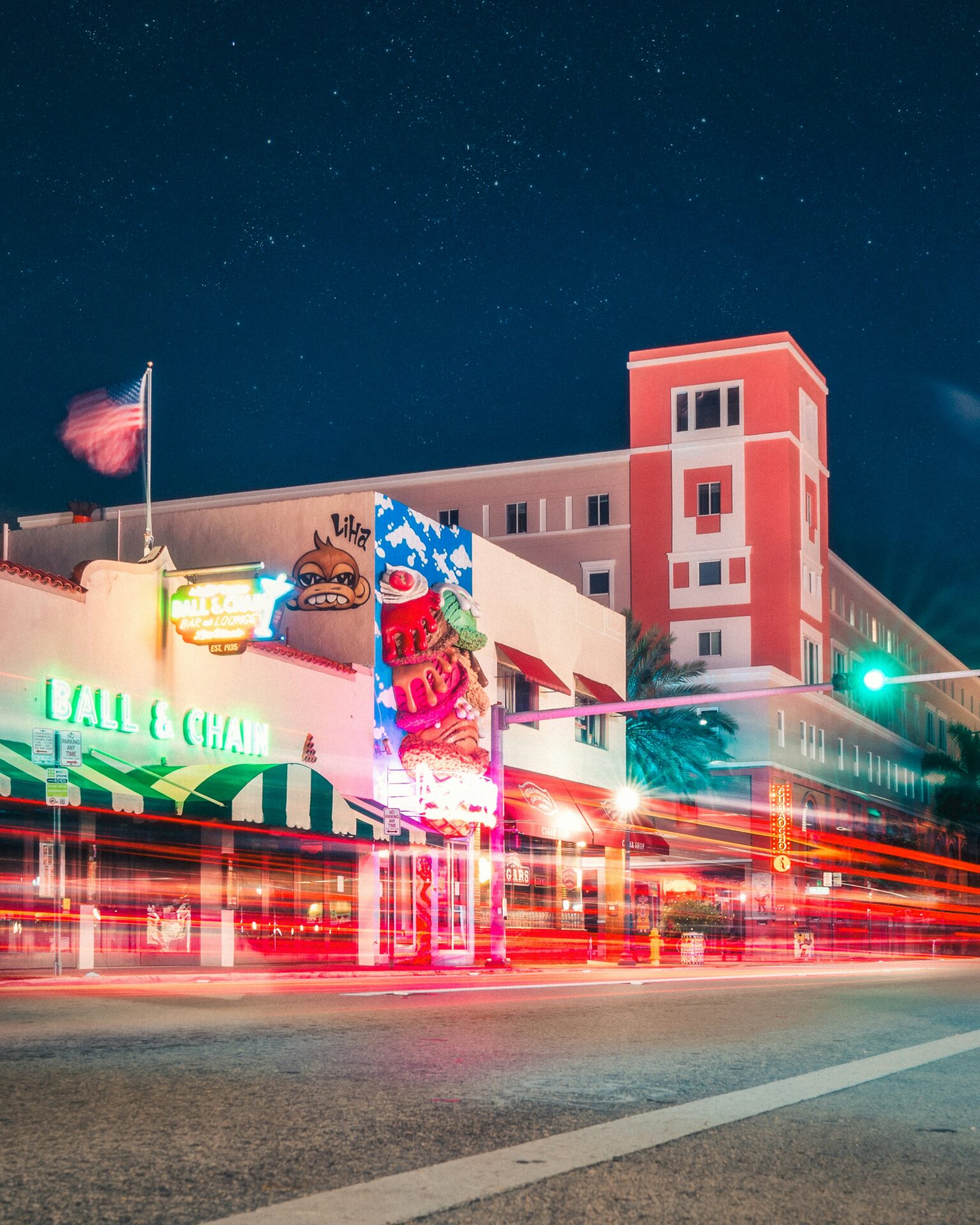
Immersing Yourself in Cuban Traditions
Little Havana introduced me to a community where daily life still revolves around old customs. Traditions here connect to the street rhythms, the laughter, and the click of domino tiles.
Exploring Maximo Gomez Park
I got to Maximo Gomez Park—locals call it Domino Park—early one morning. The open-air park sits right on Calle Ocho, and honestly, it’s the heartbeat of the Cuban community.
Tables with checkerboards fill the shaded space. Elderly men and women gather here every day, talking and laughing under the trees.
A large mural on one wall honors important Cuban figures. Palm trees cast cool shadows over people playing chess, but dominoes steal the show.
Families stop by to watch, and photographers snap pictures. The park feels open and inviting, though only locals play at the tables.
I watched routines that haven’t changed in decades. Locals sipped cafecito and shared news from Cuba.
Domino Park isn’t just a landmark; it’s a bridge between old friends and distant family. Stories cross generations here.
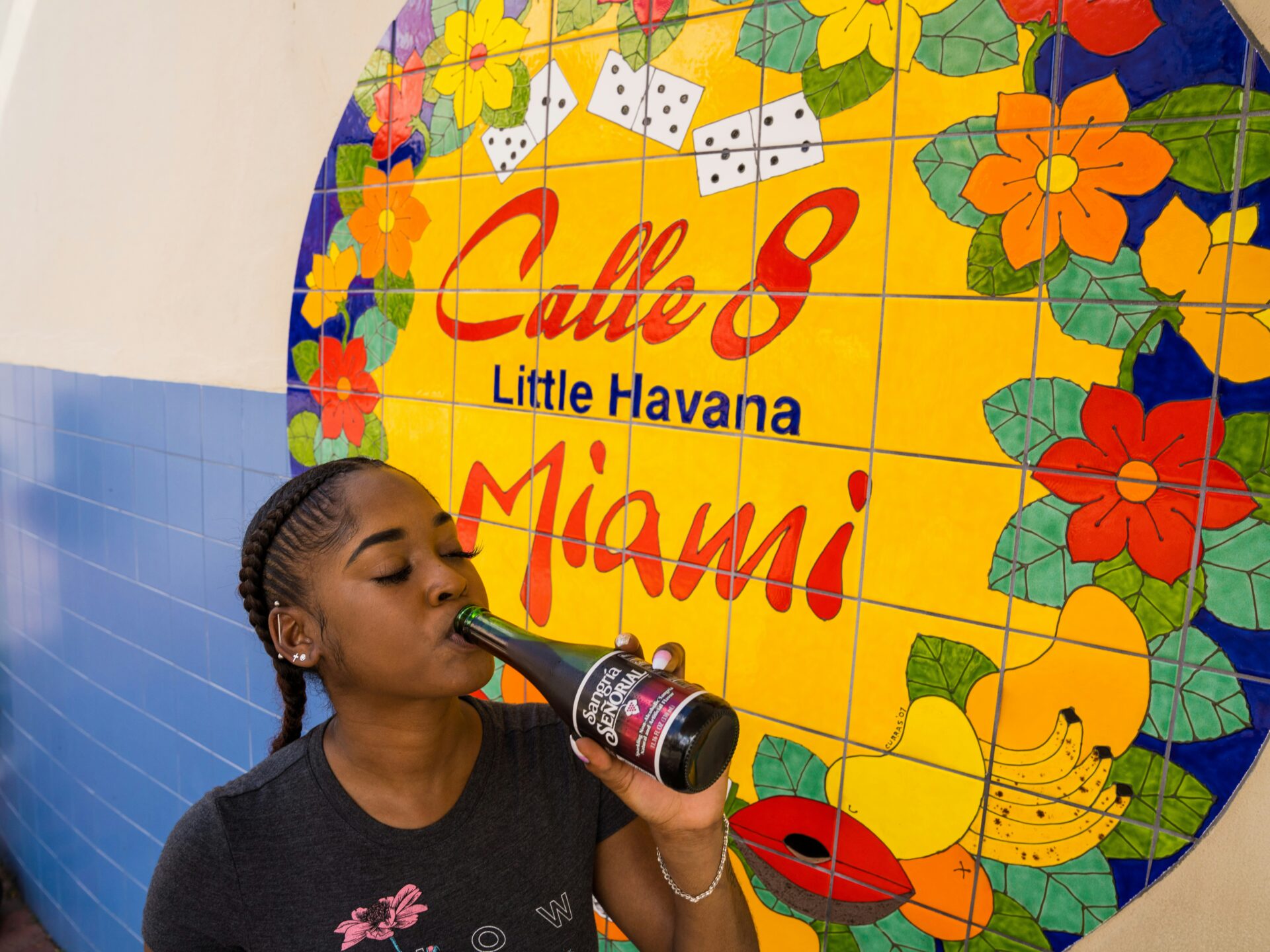
Playing Dominoes with the Locals
Watching the games, I realized dominoes is a blend of luck, quick thinking, and strategy. Players slapped down tiles with a confidence that made me smile.
Each round grew more intense, Spanish banter bouncing between tables. I asked to learn the basics, and an older man happily explained the main rules in simple English.
He mentioned that every game plays to 100 points, with doubles going first. Teams often form, so two pairs face off. Tricks and table talk add fun, but respect matters just as much as competition.
Here’s what stood out at every table:
- Fast hands placing dominoes
- Lively debates over past plays
- Shouts of “Capicúa!” when someone wins both ends
- Unwritten rules everyone just seems to know
Even just watching, I felt welcomed into the rhythm of Cuban social life. It’s kind of amazing how a simple game connects people so deeply.
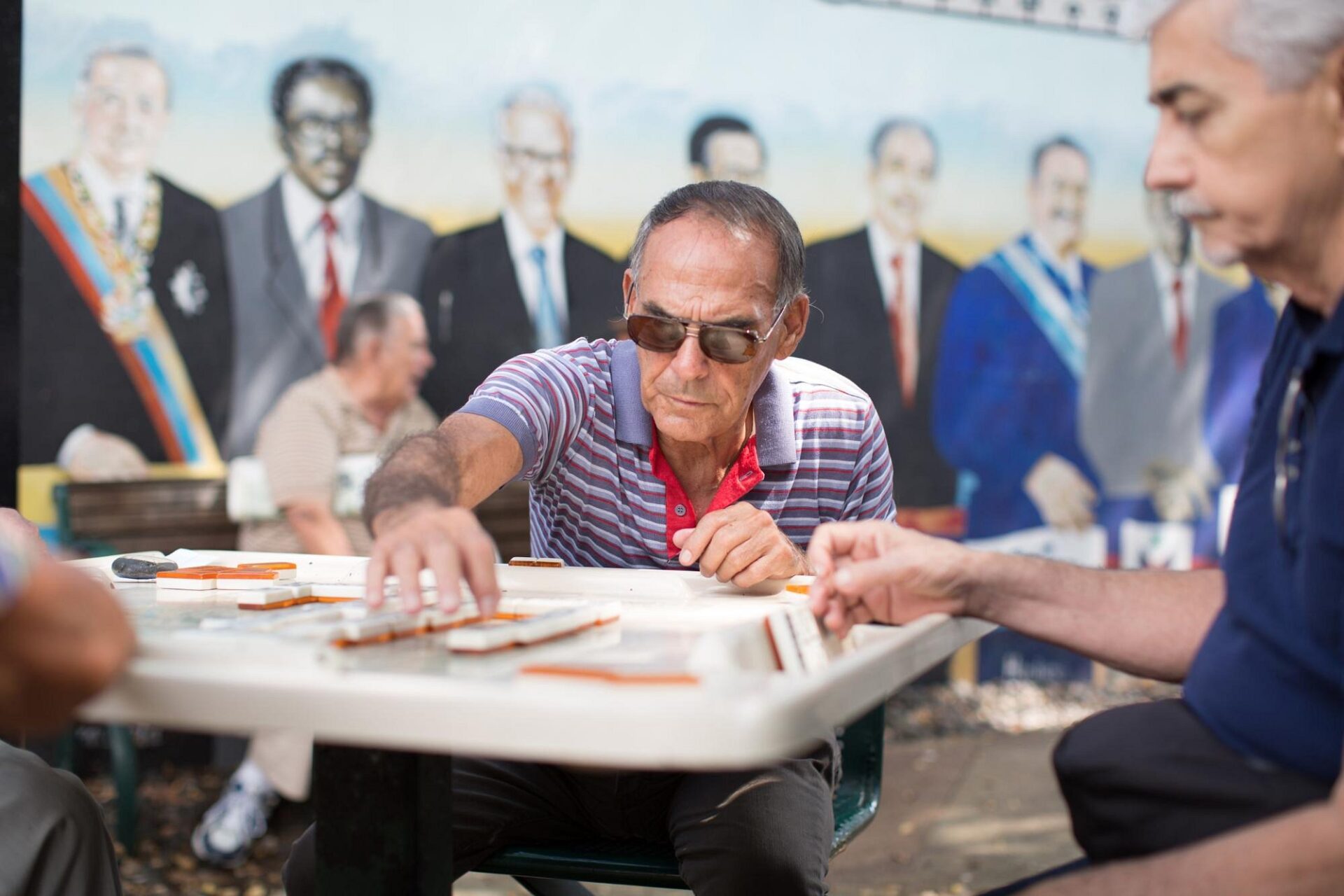
Cultural Significance of Domino Park
Domino Park means a lot more to Cuban Miami residents than just a place to play. For exiles and immigrants, these games carry memories of Havana.
It’s not really about winning—it’s about preserving culture far from home. Older men and women shared stories from their youth, saying dominoes in Miami help them remember their roots.
The park is a spot for passing down Cuban traditions. Grandparents bring grandkids to teach them both the game and Spanish.
It also acts as a community center. Locals swap news, play music, and celebrate here. Flags, photos, and art on the walls all speak to Cuban identity. Domino Park ties together past and present for so many Cuban families.
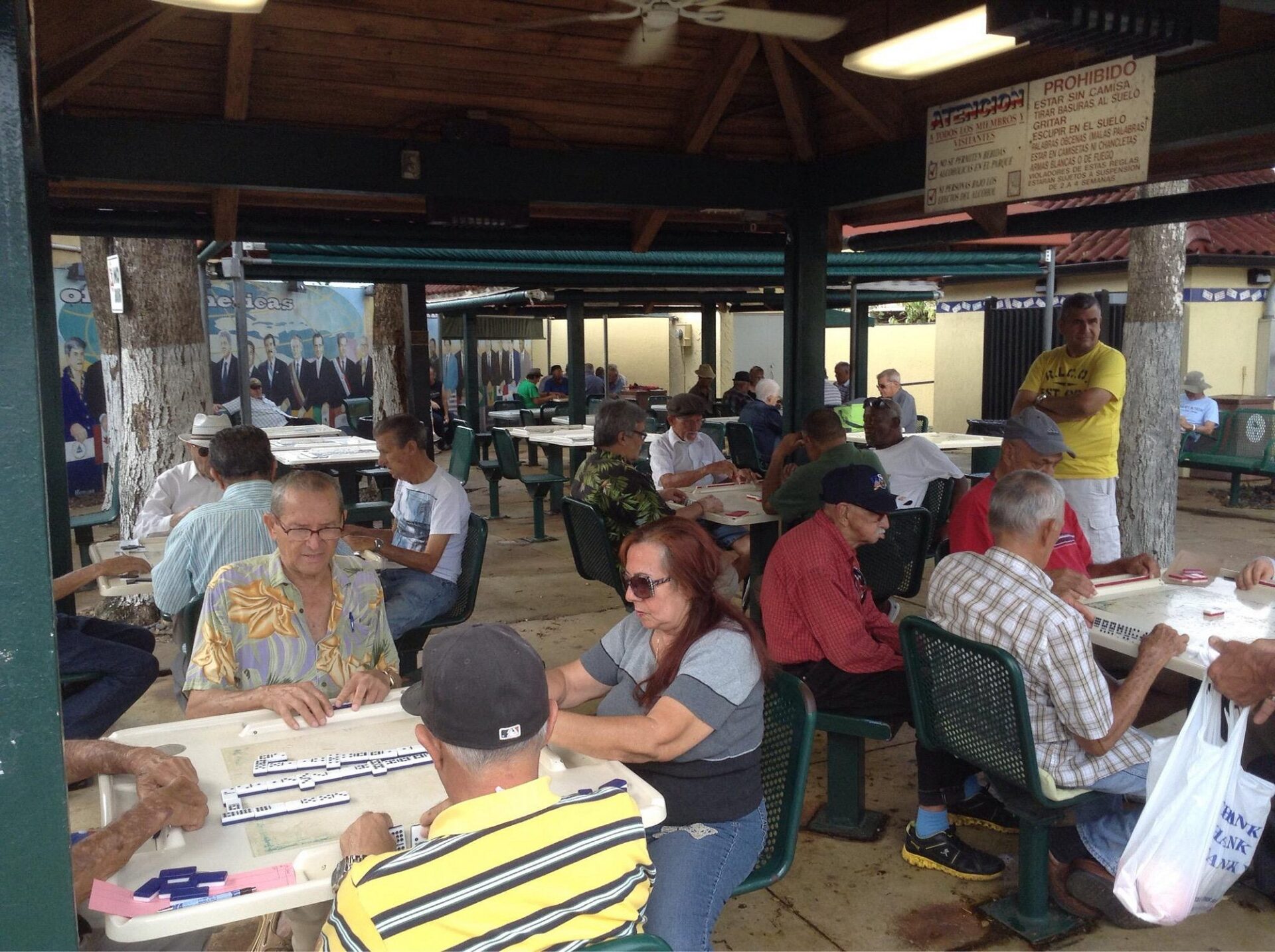
Savoring Cuban Flavors and Local Delicacies
Little Havana’s food scene is all about history, family, and creativity. I found the best way to get to know Miami’s Cuban community was to eat what the locals eat.
Sampling Azucar Ice Cream
Azucar Ice Cream stands out with its bright exterior and a crowd that always seems to be buzzing. This spot is famous for its hand-crafted, Cuban-inspired flavors.
I went for the signature Abuela Maria—guava, cream cheese, and Maria cookies all swirled together. Creamy, tangy, and just the right amount of sweet. It’s a local favorite and really tastes like Miami’s Cuban roots.
The menu surprised me with flavors like café con leche, key lime pie, and tropical fruit sorbets. Flavors change with the seasons, so there’s always something new.
Azucar sits right on Calle Ocho, making it an easy stop while exploring. The staff offered samples and recommendations, which I appreciated. If you want to cool off with something uniquely Miami, this is a must.
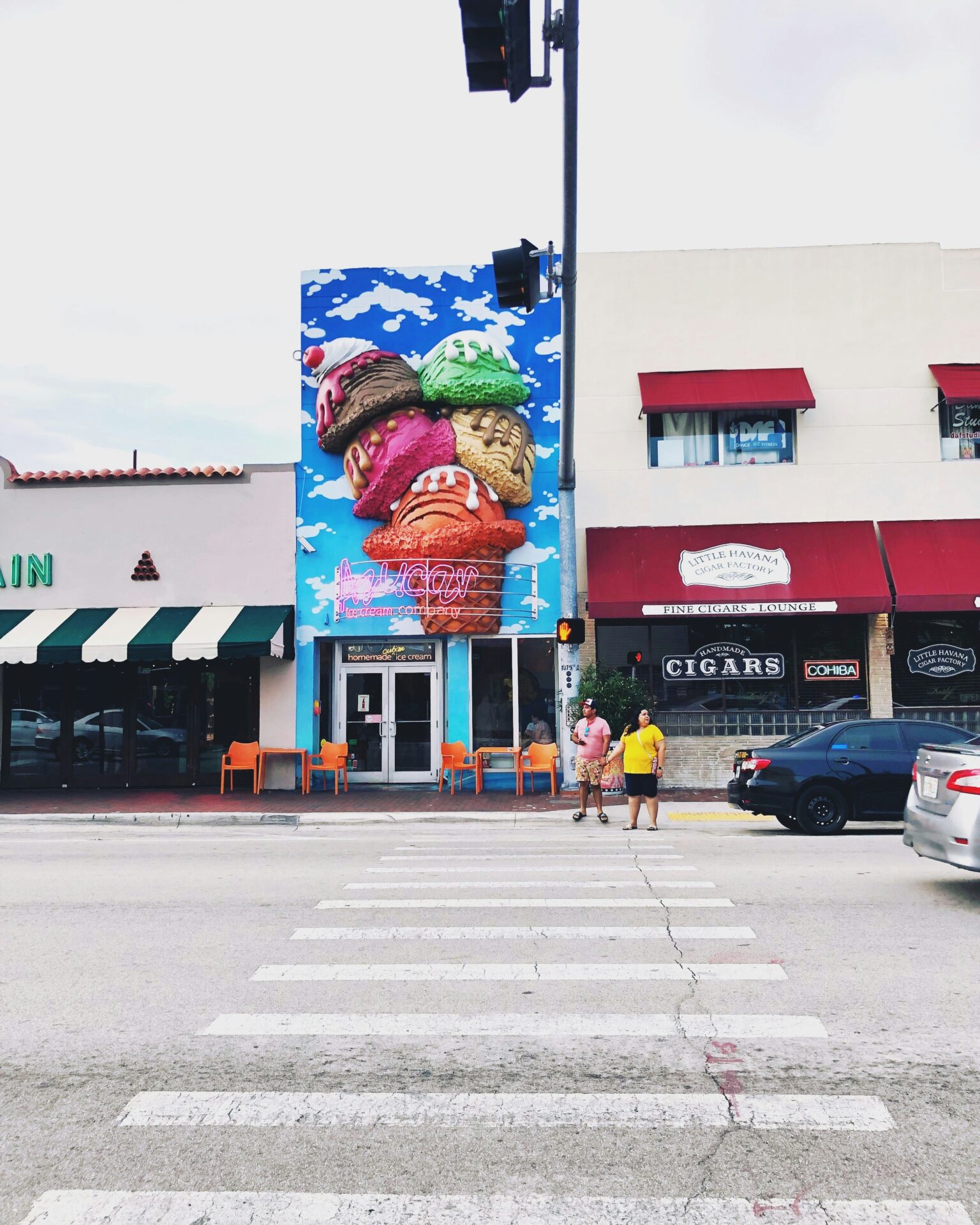
Cuban Coffee and Local Cafés
Honestly, no trip to Little Havana feels complete without Cuban coffee. Along Calle Ocho, I ducked into tiny cafés and window counters, drawn in by that rich aroma.
My first sip was a classic cafecito—tiny, sweet, and strong. Locals drink it all day, usually with a pastelito or croqueta.
The morning rush at places like La Colada Gourmet showed me just how important coffee is here. Many shops serve more than just coffee.
I tried a creamy cortadito (espresso with steamed milk) and a guava pastelito, both best enjoyed standing at the counter and chatting with whoever’s next to you.
Here’s what I saw people order most often:
- Cafecito
- Cortadito
- Café con leche
- Pastelito de guayaba
- Croquetas
It was more than just a caffeine boost—it was a chance to slow down and soak up the city’s rhythms.
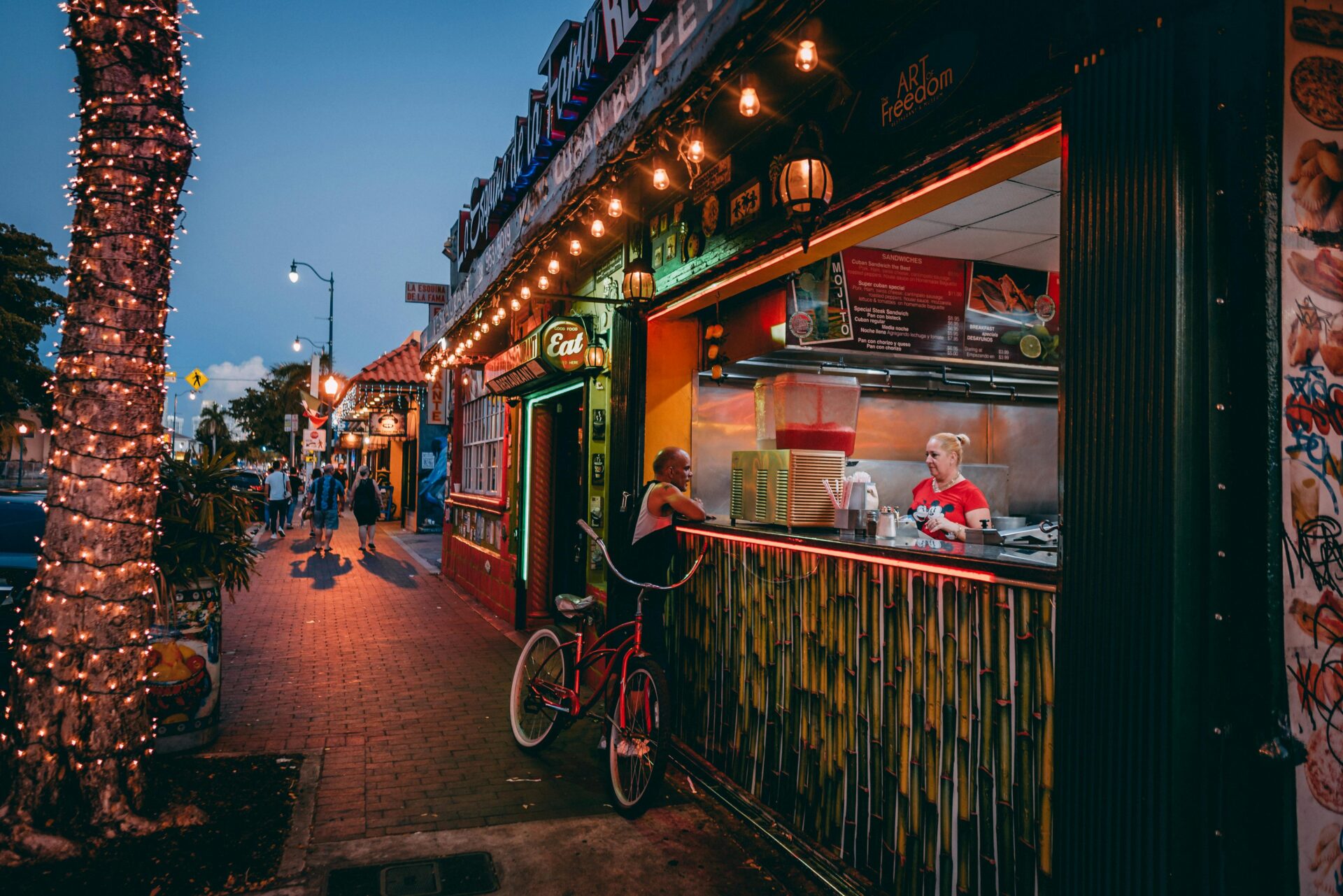
Dining at Authentic Restaurants
When hunger hit, I went searching for a real Cuban meal. El Pub Restaurant is a classic, known for its traditional dishes and lively atmosphere.
I ordered a Cuban sandwich pressed hot, stuffed with roasted pork, ham, Swiss cheese, pickles, and mustard. Crispy, filling, and unforgettable.
The menu covers ropa vieja (shredded beef stew), arroz con pollo, and fried yuca. Every dish was hearty and packed with flavor.
Street music drifted in through the windows, and families filled the tables. Service was quick, but no one rushed me.
After eating, I finished with a small coffee or a fresh juice from a nearby frutería. These restaurants prove why Little Havana’s food sticks with you long after you leave.
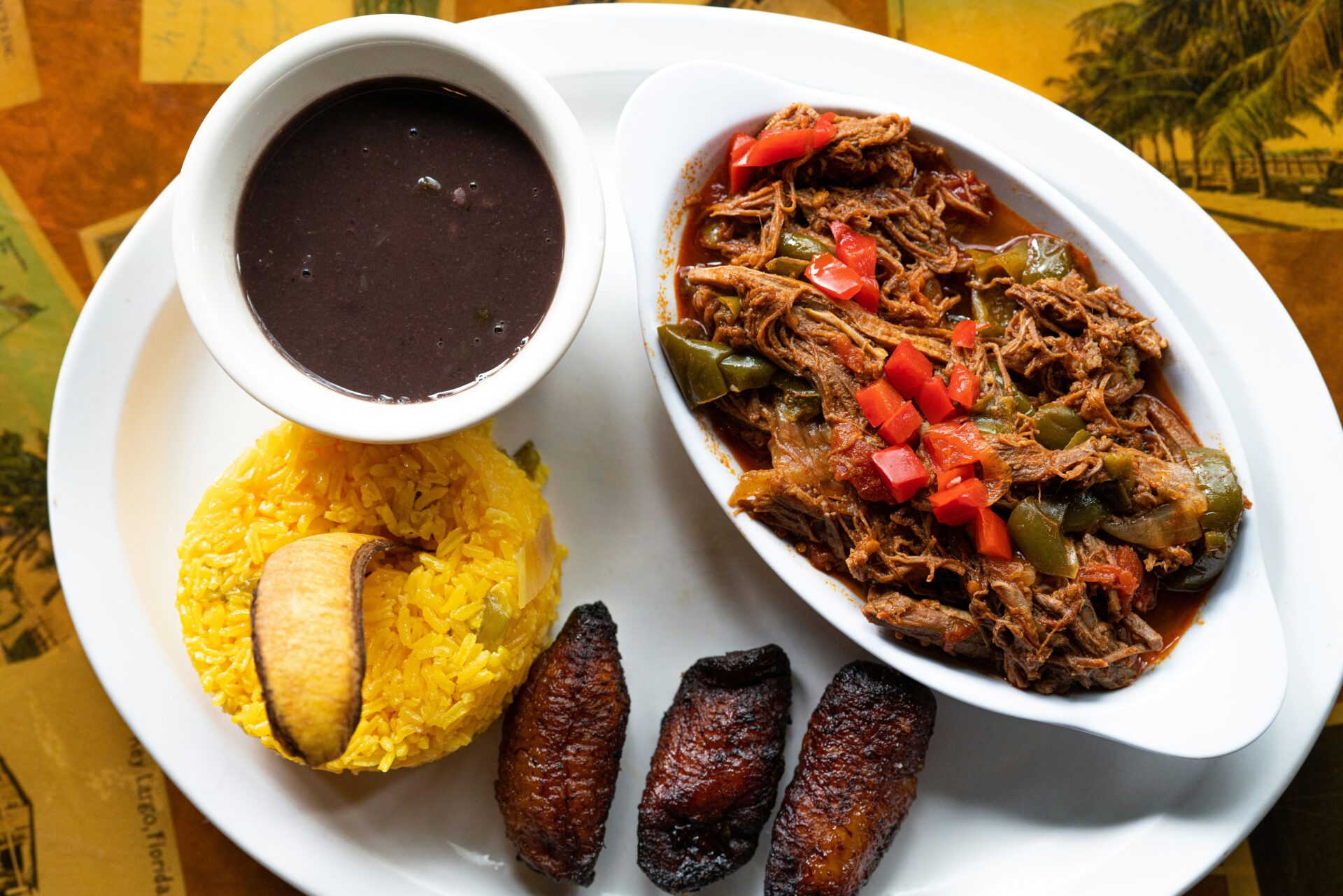
Discovering Little Havana’s Iconic Shops
Exploring Calle Ocho, I dove into Cuban culture with every store and market. Each visit brought a mix of tradition, warmth, and artistry.
Cigar Shops and Cuban Craftsmanship
Cigar shops are a staple of Calle Ocho. Many have skilled artisans rolling cigars right in front of you.
I stopped at a small factory—the air thick with the scent of fresh tobacco. Rolling tables lined with cured leaves, workers proud to share their craft.
El Titan de Bronze stood out for its attention to detail and friendly faces. I watched a torcedor, or cigar roller, explain the different tobaccos used in Cuban-style cigars.
You can often sample a cigar right after it’s made. Some shops also sell humidors, cutters, and lighters.
Many offer Cuban coffee while you browse, and honestly, the combo of rich cigar smoke and bold cafecito is pure Little Havana. Whether you’re a cigar fan or just curious, these shops welcome everyone.
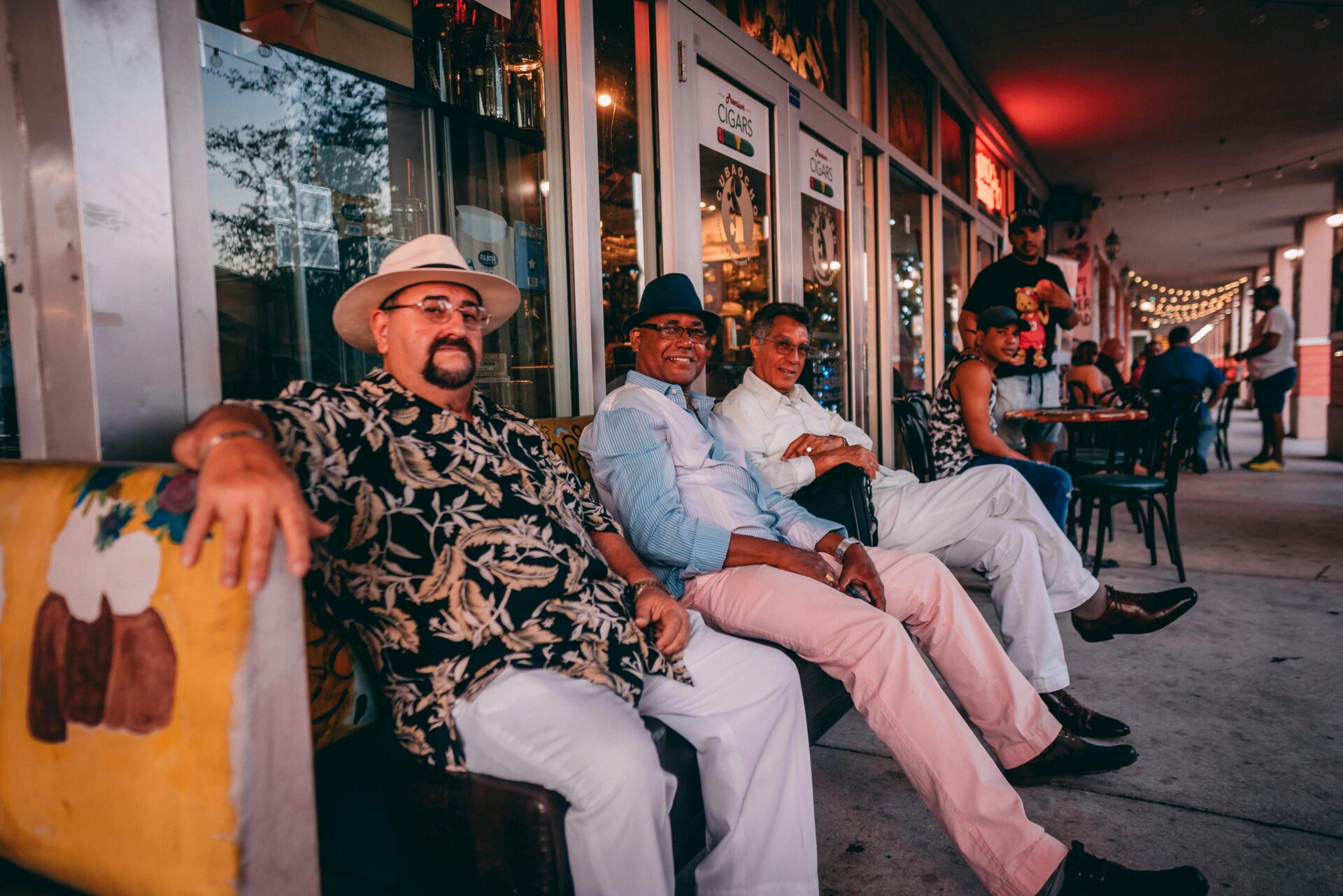
Shopping for Unique Souvenirs
Beyond cigars, Calle Ocho overflows with shops selling unique Cuban souvenirs. I found hand-painted domino sets, guayabera shirts, and art bursting with Cuban life.
A favorite find? A tiny shop packed with vintage Cuban posters and folk art. The owner told me stories behind each piece.
Jewelry, embroidered bags, hats—so many items reflect true Cuban style. I also stumbled onto a market booth selling locally made honey and tropical jams.
If you’re shopping for gifts, you’ll find something for every taste and budget. Wear light clothes—shops get busy, especially on weekends.
It’s easy to lose track of time browsing, talking to shopkeepers, and soaking up the creativity everywhere.
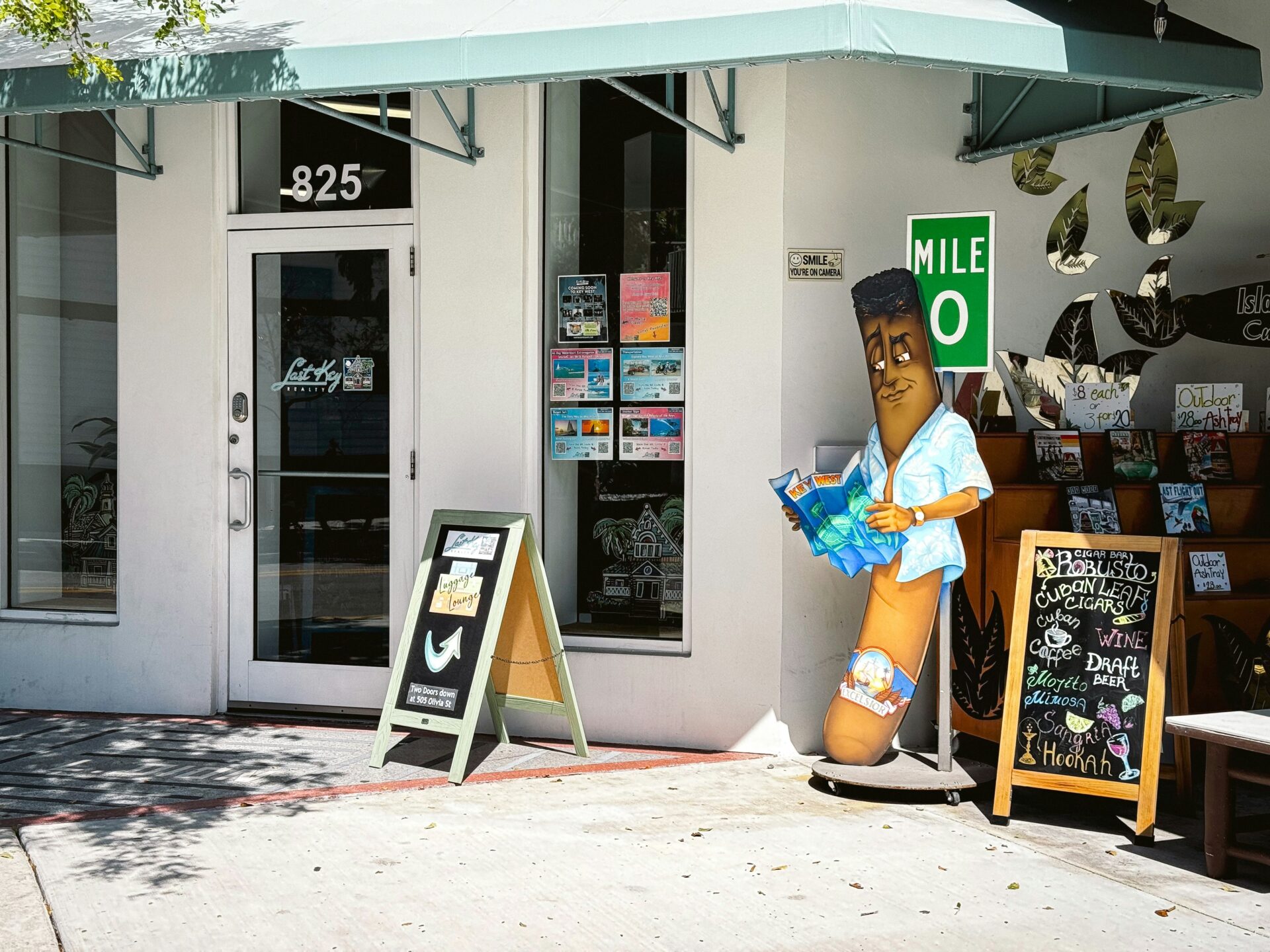
Music, Art, and Nightlife on Calle Ocho
Every night, Calle Ocho turns up the volume. Live music, laughter, and street life spill onto the sidewalks.
The area draws you in with lively venues, colorful murals, and late-night dances that capture Cuban Miami’s spirit.
Live Music Venues
Calle Ocho is famous for live music. Most bars and clubs host local bands and singers.
Ball & Chain stands out—it’s been around since the 1930s. The stage is shaped like a pineapple, and the playlist is always packed with salsa, jazz, and Latin fusion.
Cubaocho Museum & Performing Arts Center offers music nearly every night. Surrounded by art and vintage decor, I felt the strong connection between Cuban history and today.
Live bands played classics that got everyone moving, no matter their age. Almost every block had a spot with a guitarist or pianist.
Music spills out into the street, and it’s impossible not to pause and listen. Some venues don’t even charge a cover—you can just wander in and get a real taste of Miami’s music scene.

Street Art and Murals
As I wandered down Calle Ocho, I couldn’t help but notice the explosions of color on nearly every wall. These murals do more than just decorate—they shout stories about Cuban migration, pay tribute to lost heroes, and celebrate women and music legends.
The Rooster Statues really caught my eye. Painted in wild colors and quirky patterns, they somehow capture both Cuban and Miami spirit in a way that’s hard to explain unless you’ve seen them for yourself.
There’s this massive portrait of Celia Cruz, the iconic Cuban singer, that just stops you in your tracks. It feels like her music spills right onto the sidewalk, and honestly, it made me smile.
I decided to join a walking tour to dig deeper into the stories behind these artworks. Local Cuban-American painters pour their stories and energy into the neighborhood with every brushstroke.
Even the tiles underfoot have hidden details—so keep your eyes peeled. You never know what little surprise you might spot next.
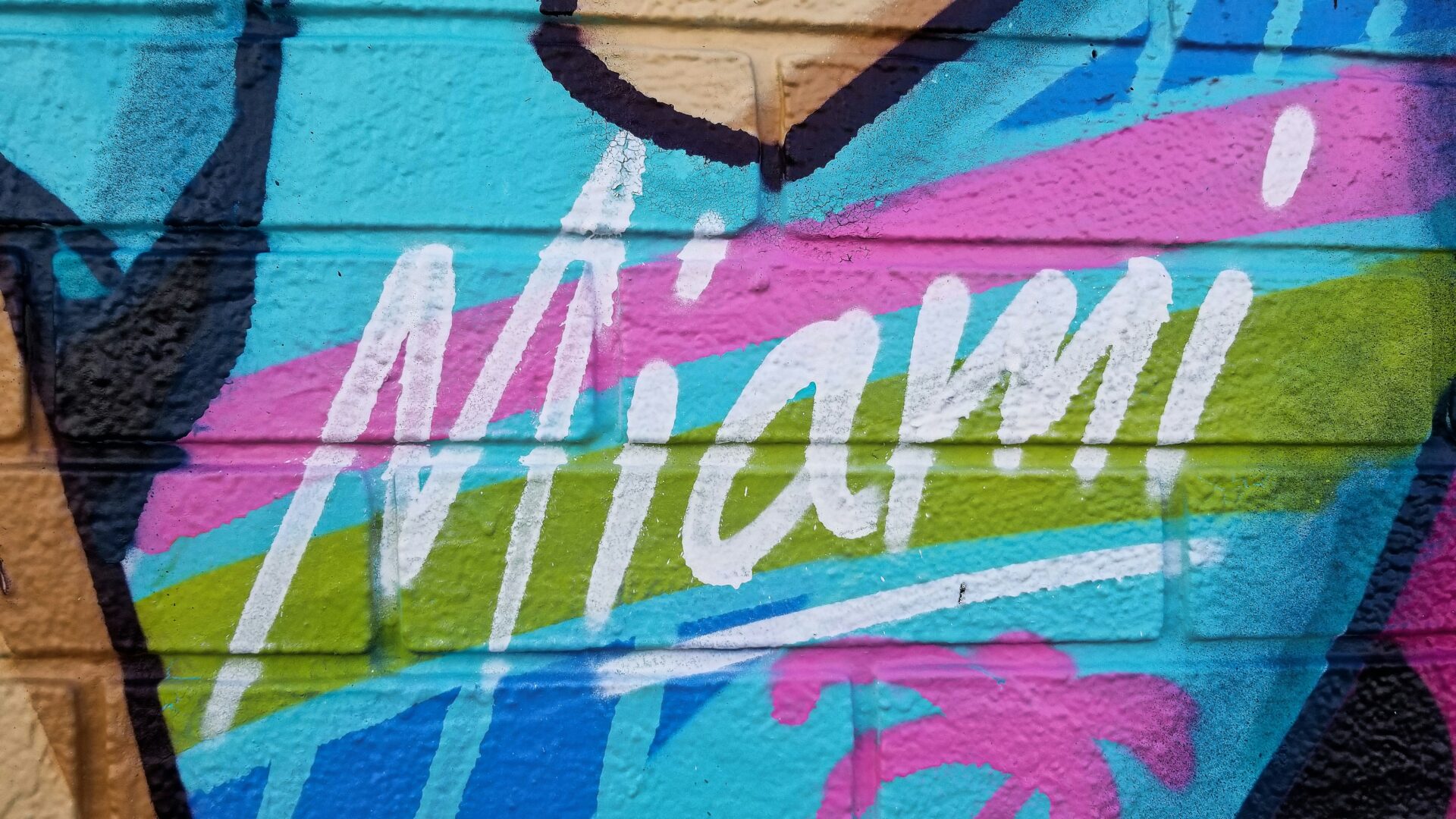
Dancing into the Night
As the night rolls in, Calle Ocho turns into a full-on block party. Dancing isn’t just an option here—it feels like it’s stitched right into the street’s DNA.
I wandered into Ball & Chain, where the dance floor never really goes quiet. Salsa and mambo beats pull people in, and sometimes you’ll even find free lessons happening. Even if you’ve got two left feet, it’s easy to jump in and give it a try.
I watched couples spinning through the cha-cha in old-school clubs. Some folks switched things up with merengue or rumba. The music just spills out onto the patios, and before long, everyone’s moving—tourists, locals, you name it.
Crowds gather to cheer on older dancers who still have those classic Cuban moves down pat. It’s honestly pretty inspiring.
A lot of these spots keep the party going until 3 a.m., and the dancing just drifts right out onto the sidewalks. The whole vibe feels electric, but still somehow welcoming.
Even if you’re not much of a dancer, just soaking up the energy on Calle Ocho makes it worth the trip.

